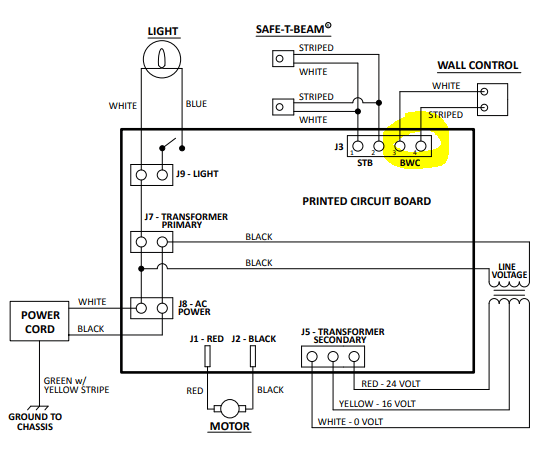Garage door openers have become an essential part of our daily lives, offering convenience and security as we effortlessly open and close our garage doors. Behind this seemingly simple mechanism lies a complex system of electrical components and wiring that ensures smooth and reliable operation. One crucial aspect that plays a significant role in the proper functioning of a garage door opener is the wiring diagram. In this article, we will delve into the importance of wiring diagrams for garage door openers and explore how they contribute to the overall efficiency and safety of these devices.

The Purpose of Wiring Diagrams
A wiring diagram visually represents the electrical connections between components in a garage door opener system, showing how each part seamlessly interconnects to make the system work. These components typically include the motor, sensors, switches, remote control units, safety features, and power supply. A well-labeled wiring diagram helps identify and troubleshoot system issues easily.
Ensuring Proper Installation Proper installation of a garage door opener is crucial for its long-term performance and safety. Without a wiring diagram, the installation process can become a daunting task, leading to errors and potential hazards. The wiring diagram acts as a comprehensive guide, aiding in the correct setup and connection of all the components. Following the diagram ensures that each wire is correctly placed, preventing electrical faults and reducing the risk of accidents or malfunctions.
The Significance of Wiring Diagrams Garage Door Opener
Safety First Garage doors are heavy, and an improperly installed opener poses safety risks to people and property. The wiring diagram ensures proper connection and functioning of safety features like auto-reverse, infrared sensors, and emergency release. This prevents closures on obstructions, reduces entrapment risks, and enables manual operation during power outages or emergencies.
Troubleshooting and Repairs Over time, garage door openers may encounter issues such as motor malfunctions, sensor misalignments, or remote control problems. When faced with such situations, the wiring diagram becomes an invaluable tool. It helps diagnose the root cause of the problem, making it easier to pinpoint the faulty component or wiring connection. Technicians can refer to the diagram to trace circuits, check for continuity, and rectify any faults effectively.
Upgrades and Modifications Homeowners often consider upgrading their garage door openers to incorporate the latest features or improve functionality. Additionally, specific garage setups may necessitate custom modifications. A wiring diagram facilitates these changes, guiding users through the process of integrating new components or altering existing connections. This allows for a seamless upgrade process without the risk of damaging the opener or voiding warranties.
Conclusion
In conclusion, a wiring diagram is an essential aspect of a garage door opener system that should not be overlooked. It plays a critical role in ensuring the safe and efficient operation of the opener by providing a clear representation of the electrical connections. From installation to troubleshooting and upgrades, the wiring diagram serves as a valuable reference for technicians and DIY enthusiasts alike. Understanding and utilizing the wiring diagram correctly not only extends the lifespan of the garage door opener but also enhances the overall safety and convenience it offers to users.
So, whether you are installing a new garage door opener or dealing with an existing one, always remember the importance of the wiring diagram in keeping your garage and loved ones safe. Happy garage door operating!



Leave a Reply